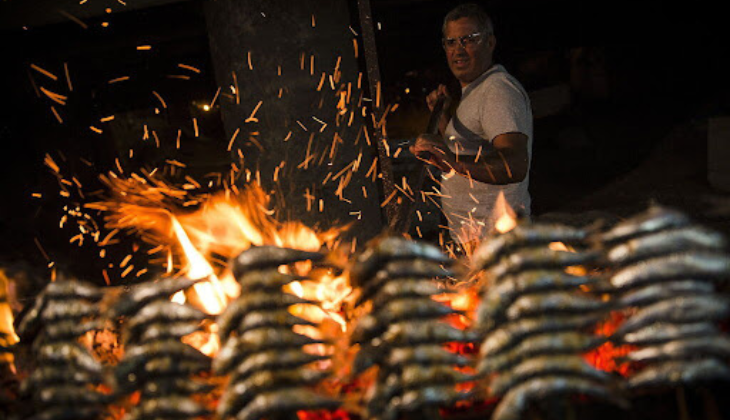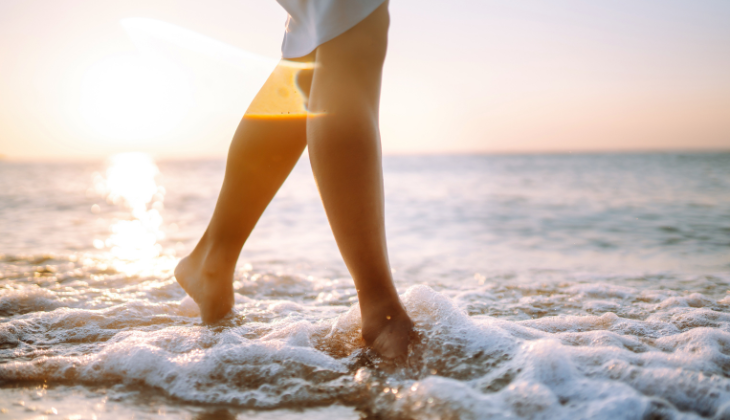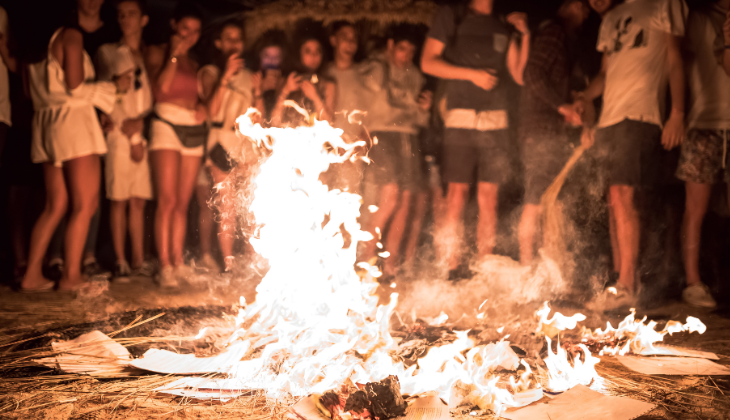It’s the shortest night of the year as well as one of the most magical. On the 23 June, the eve of San Juan, thousands of people flock to the beaches of the coastal municipalities in the Costa del Sol to welcome in the summer in a very special way: by tucking into delicious fish cooked over an open flame and taking a dip in the sea when the clock strikes 12. On the night of the 23 June, the seaside destinations in the province host popular moragas. Have you ever heard of this typical celebration for Noche de San Juan (the night of Saint John) in the Costa del Sol? Keep reading so that this year you can celebrate San Juan like a local.
What are moragas?
If you have ever been lucky enough to spend some time in any of the coastal municipalities in the province of Malaga, you are sure to be familiar with the term moraga. Though particularly popular on the eve of San Juan, this tradition is kept alive throughout the summer months in the Costa del Sol.
Normally held at the beach, moragas are alfresco barbecues featuring fish cooked on the open flame. Historically, moragas took place when the fishermen had returned with their catch of the day. Guitar music and beautiful weather come together to create the perfect atmosphere to savour the delights of the fishermen’s fresh pickings cooked on the fire. Moragas regularly take place across the municipalities lining the Malaga coast, pairing fiesta with gastronomy. All sorts of fish are cooked on the fire, though sardines are a popular choice. If you’re planning on hosting a moraga on the beach, we recommend checking out the municipality’s legislation beforehand: fires are not permitted at all beaches.
 Source: MálagaHoy
Source: MálagaHoy
Noche de San Juan traditions
On the night of the 23 June, the eve of San Juan, locals and visitors head to the beach to celebrate the arrival of summer in what is thought to be the most magical night of the year. San Juan is a tremendously popular fiesta in the province, attracting countless visitors that come to enjoy the moragas, gaze at the bonfires lit up and down the beaches and jump over them at midnight: tradition has it that this brings good luck.
Just after midnight, the municipalities of the Costa del Sol partake in an important tradition: the burning of the júas. Made by the locals, these large effigies are formed out of rags, and normally stuffed with sawdust. Often satirically depicting a well-known character, they are burnt, representing the purification of the things that you no longer want in your life.
Beyond the ritual of jumping over the bonfire, another tradition states that if you take a dip in the sea at midnight your fortune will change as you leave behind the bad and embark on a chapter imbued with better luck. But these aren’t the only traditions. Some people make three wishes while paddling in the sea while others jump nine waves at midnight to bring good luck.

As you can see, the meaning behind all these traditions for Noche de San Juan revolves around the idea of leaving behind the bad and embarking on a new stage of life. What’s more, local wisdom states that the temperature and weather on this magical night forecasts the weather for the whole of the summer.
Where can you celebrate Noche de San Juan in the Costa del Sol?
Although you can enjoy Noche de San Juan at any of the beaches in the province, some destinations are renowned for their festivitiesacilities. Malaga city is a case in point as a special effort is made to make the night even more magical. La Malagueta beach is one of the most popular places to enjoy the fiesta as, beyond the moragas, you can expect concerts and fireworks. At other beaches in the city, like La Misericordia and El Palo, there’s always a lively atmosphere. Other great places to celebrate Noche de San Juan in the Costa del Sol are Bil-Bil beach (Benalmádena), El Pinillo, El Cable and San Pedro Alcántara in Marbella, and La Rada and El Cristo in Estepona. In Casares Costa, the fiesta kicks off at Ancha beach, where an orchestra usually plays to serenade the evening. So what about you? Where will you celebrate Noche de San Juan in the Costa del Sol?








